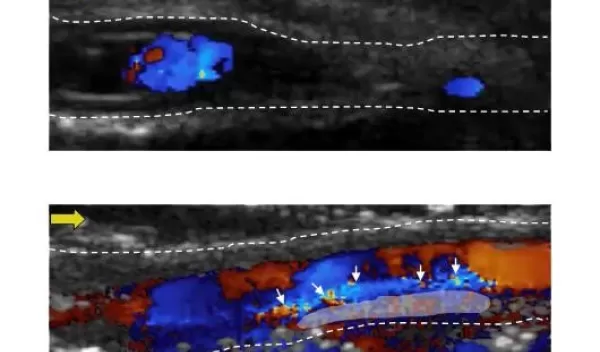
Biomedical engineers find imaging technique could become treatment for deep vein thrombosis
Biomedical engineers at Penn State set out to develop technology capable of localizing and imaging blood clots in deep veins. It turns out that their work may not only identify blood clots, it may also be able to treat them.
The U.S. National Science Foundation-funded team, led by Scott Medina, published the results in Advance Healthcare Materials.
"Deep vein thrombosis is the formation of blood clots in deep veins, typically in a person's legs," said Medina. "It's a life-threatening blood clotting condition that, if left unaddressed, can cause deadly pulmonary embolisms -- when the clot travels to the lungs and blocks an artery. To manage DVT and prevent these life-threating complications, it's critical to rapidly detect, monitor and treat it."
The challenge, according to Medina, is that current diagnostic imaging methods lack the resolution required to precisely pinpoint potential breeding grounds for clots and monitor the clots in real time. DVT can sometimes present as swelling and aching in a person's leg, which can then be examined via ultrasound.
"Ultrasound isn't great for diagnosing DVT," Medina said. "It can tell you that a region of fluid flow may look odd, which might be related to a clot -- but maybe not. You follow up with blood tests to look for specific factors, and, together, you might be able to diagnose a clot."
To better identify the location, composition and size of clots, which informs how to treat them, Medina and his team used a particle approach. Called nanopeptisomes, or NPeps, the particles comprise a shell around a droplet of fluorine-based oil, similar to liquid Teflon. The surface of the shell holds a molecule that finds and binds a protein on the surface of activated platelets, a key cellular component of clots.
"The particles bind to the surface of the clots, we apply the ultrasound, and the droplet turns to gas and forms a bubble under the shell," said Medina. "It gives an excellent contrast for imaging. The bubbles appear exactly where the clots are forming."


